Chemical Bonding: The Journey from Miniature Hooks to Density Functional Theory
- PMID: 32516906
- PMCID: PMC7321411
- DOI: 10.3390/molecules25112623
Chemical Bonding: The Journey from Miniature Hooks to Density Functional Theory
Abstract
Our modern understanding of chemistry is predicated upon bonding interactions between atoms and ions resulting in the assembly of all of the forms of matter that we encounter in our daily life. It was not always so. This review article traces the development of our understanding of bonding from prehistory, through the debates in the 19th century C.E. bearing on valence, to modern quantum chemical models and beyond.
Keywords: affinity, structure; bonding; history of science; valency.
Conflict of interest statement
The authors declare no conflicts of interest.
Figures


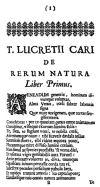
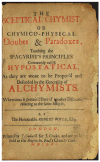


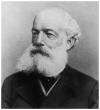

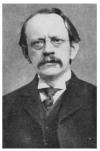

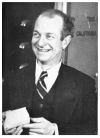
Similar articles
-
Hydrogen-bonding network in anhydrous chitosan from neutron crystallography and periodic density functional theory calculations.Carbohydr Polym. 2019 Mar 1;207:211-217. doi: 10.1016/j.carbpol.2018.11.042. Epub 2018 Nov 22. Carbohydr Polym. 2019. PMID: 30600001
-
Nitropyridine-1-Oxides as Excellent π-Hole Donors: Interplay between σ-Hole (Halogen, Hydrogen, Triel, and Coordination Bonds) and π-Hole Interactions.Int J Mol Sci. 2019 Jul 12;20(14):3440. doi: 10.3390/ijms20143440. Int J Mol Sci. 2019. PMID: 31336936 Free PMC article.
-
Intermolecular Non-Covalent Carbon-Bonding Interactions with Methyl Groups: A CSD, PDB and DFT Study.Molecules. 2019 Sep 16;24(18):3370. doi: 10.3390/molecules24183370. Molecules. 2019. PMID: 31527496 Free PMC article.
-
How valence bond theory can help you understand your (bio)chemical reaction.Chem Soc Rev. 2015 Mar 7;44(5):1037-52. doi: 10.1039/c4cs00241e. Chem Soc Rev. 2015. PMID: 25352378 Review.
-
Quantum Chemical Modeling of Hydrogen Bonding in Ionic Liquids.Top Curr Chem (Cham). 2017 Jun;375(3):59. doi: 10.1007/s41061-017-0142-7. Epub 2017 May 18. Top Curr Chem (Cham). 2017. PMID: 28523638 Free PMC article. Review.
Cited by
-
Simple and Accurate Exchange Energy for Density Functional Theory.Molecules. 2020 Jul 31;25(15):3485. doi: 10.3390/molecules25153485. Molecules. 2020. PMID: 32751903 Free PMC article.
-
Unicorns, Rhinoceroses and Chemical Bonds.Molecules. 2023 Feb 12;28(4):1746. doi: 10.3390/molecules28041746. Molecules. 2023. PMID: 36838734 Free PMC article.
-
Directional Ionic Bonds.J Am Chem Soc. 2023 Apr 7;145(15):8291-8. doi: 10.1021/jacs.3c01030. Online ahead of print. J Am Chem Soc. 2023. PMID: 37027000 Free PMC article.
References
-
- IUPAC . Compendium of Chemical Terminology. 2nd ed. Blackwell Scientific Publications; Oxford, UK: 1997. [(accessed on 20 March 2020)]. (the “gold Book”). Compiled by a. D. Mcnaught and a. Wilkinson. Available online: - DOI
-
- Frenking G., Shaik S. The Chemical Bond. Fundamental Aspects of Chemical Bonding. Wiley-VCH; Weinheim, Germany: 2014.
-
- Frenking G., Shaik S. The Chemical Bond. Chemical Bonding Across the Perodic Table. Wiley-VCH; Weinheim, Germany: 2014.
-
- Coulson C.A. The Shape and Structure of Molecules. Oxford University Press; Oxford, UK: 1982.
-
- Magnasco V. Models for Bonding in Chemistry. Wiley; Chichester, UK: 2010.
Publication types
MeSH terms
Substances
LinkOut - more resources
Full Text Sources

